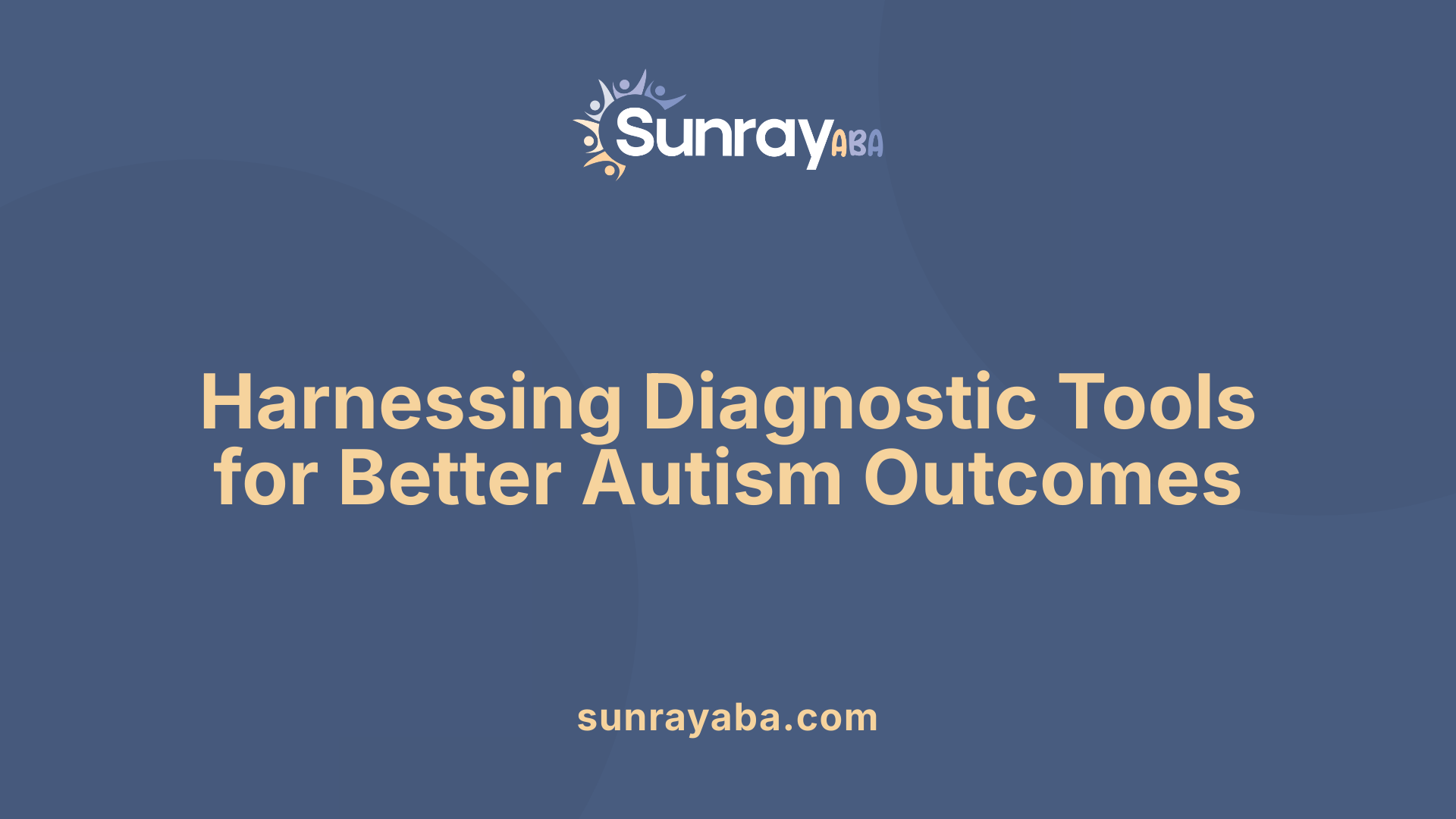Autism Risk Calculator

Understanding Autism Spectrum Disorder and the Role of Risk Calculators
Autism Spectrum Disorder (ASD) is a complex neurodevelopmental condition characterized by social communication challenges, repetitive behaviors, and restricted interests. Diagnosed through comprehensive behavioral assessments and standardized tools, early identification remains crucial for improving outcomes. Recent advances include the development of autism risk calculators—computational models that analyze pre- and perinatal factors to estimate the likelihood of ASD, aiming to facilitate earlier and more accurate screening.
Modeling Autism Risk Using Prenatal and Perinatal Data

What are the pre- and perinatal factors involved in autism risk?
Autism spectrum disorder (ASD) is influenced by a variety of genetic and environmental factors. Recent studies highlight several prenatal and perinatal elements that may increase the risk of developing autism. Notable among these are maternal health conditions such as allergic or autoimmune diseases, stressors during pregnancy, and infections like influenza-like illnesses. Additionally, birth-related factors such as cesarean sections and episodes of hypoxia—an oxygen deficiency during birth—have been associated with a higher likelihood of ASD.
These factors are significant because they occur during critical periods of brain development. For example, immune system activation and oxygen deprivation can impact neural growth and connectivity. Since many of these risk factors can be obtained through parental reports or medical records, they are easily accessible for clinical screening and risk estimation.
How have researchers developed and validated risk prediction models?
To better predict autism risk, researchers have constructed models incorporating these prenatal and perinatal factors. Using large datasets, these models analyze the presence or absence of specific risk factors and calculate the probability of autism diagnosis later in childhood. A notable model achieved an area under the curve (AUC) of approximately 0.71, indicating good ability to distinguish between children who will or will not develop ASD.
External validation processes have been conducted, applying the models to independent cohorts to test their robustness. These validations showed consistent predictive performance, confirming that the models are reliable across different populations. Importantly, because the factors used are obtainable from routine medical records, the models are practical for real-world clinical use.
What are the key factors used in current models?
The most influential predictors included in these models are:
| Factor | Description | Significance |
|---|---|---|
| Pregnancy influenza-like illness | Maternal flu or similar infections during pregnancy | Increased immune response linked to neural development issues |
| Pregnancy stressors | Stressful events during pregnancy | Associated with adverse neurodevelopmental outcomes |
| Maternal allergic/autoimmune disease | Maternal immune system dysregulation | May affect fetal brain development |
| Cesarean section | Birth via cesarean delivery | Potentially linked to altered microbiome and immune responses |
| Hypoxia | Oxygen deprivation during birth | Critical for brain development, linked to neurodevelopmental disorders |
These factors are combined into computational models that yield risk probabilities, helping identify children who might benefit from early intervention.
How can these models be applied in clinical practice?
Since the variables are accessible from parental reports and medical records, implementing these prediction models in routine practice is feasible. They can potentially lower the age at which autism risk is identified, even before behavioral symptoms are apparent. Early risk prediction supports timely interventions that improve developmental outcomes.
Such models can also assist in stratifying risk for research purposes, guiding targeted screening efforts, and informing parental counseling. Overall, integrating these prediction tools into pediatric care has the potential to transform early autism detection and intervention strategies.
The Role of Genetic and Environmental Factors in Autism Risk Prediction

What is the scientific basis behind autism risk prediction tools and recent research findings?
Autism risk prediction tools are built on the foundation of integrating various data sources to estimate an individual’s likelihood of developing ASD. Recent advancements involve combining clinical information, genetic profiles, and behavioral patterns to increase their predictive power.
Innovative models, often leveraging machine learning techniques such as XGBoost, analyze large datasets with minimal background information to identify important risk factors. These tools can provide risk assessments as early as the first month of life, opening possibilities for earlier intervention.
Research has shown that these models can achieve an area under the curve (AUC) of about 0.70 to 0.90, indicating good to excellent discrimination capability. Validation studies across different populations affirm their reliability and potential to be incorporated into routine clinical practice.
Continued development aims to include phenotypic traits and genetic markers, further enhancing their precision, and helping clinicians identify children at risk before behavioral symptoms appear.
What are the key prenatal and perinatal factors associated with autism risk?
Several prenatal factors have been linked to an increased chance of ASD. These include maternal influenza-like illnesses, which can cause immune responses affecting fetal development.
Pregnancy stressors, whether emotional or physical, and autoimmune or allergic maternal diseases are also associated with greater autism risk. Moreover, hypoxia—insufficient oxygen during pregnancy—can interfere with brain development.
Perinatal factors like cesarean sections and birth-related hypoxia further contribute to the risk profile. These factors are accessible through parental reports and medical records, making them practical components of predictive models.
Incorporating these factors allows for a more accurate early risk assessment, potentially guiding preventive strategies before behavioral signs emerge.
How do environmental exposures and genetic predispositions interact to influence autism risk?
Environmental exposures during sensitive developmental periods can significantly affect neurodevelopment, especially when combined with genetic susceptibility.
For example, chemical exposures during pregnancy might alter gene expression or disrupt neurodevelopmental pathways, amplifying the effect of genetic predispositions inherited from family members.
Genetic factors, such as a family history of ASD, increase the likelihood that environmental influences will impact developmental outcomes. Recent research is focusing on models that integrate both genetic and environmental data, reflecting the complex, multifactorial origins of autism.
This integrated approach helps clarify how certain exposures during critical windows can modify risk in genetically susceptible individuals. It also guides the development of targeted prevention strategies, aiming to reduce exposure to harmful agents during pregnancy.
| Aspect | Details | Additional Notes |
|---|---|---|
| Genetic Predispositions | Family history, genetic markers | Increased susceptibility to environmental factors |
| Environmental Influences | Maternal health, chemicals, birth complications | Can interact with genetic risk factors |
| Model Integration | Combining genetic and environmental data | Improves prediction accuracy |
| Practical Application | Early intervention, tailored prevention | Supports personalized medicine strategies |
Early Detection and the Utility of Diagnostic and Screening Tools

Why is early screening and intervention important?
Early detection of autism spectrum disorder (ASD) is essential because it allows children to access support and therapies during critical developmental periods. Detecting signs early can significantly improve social and communication skills, as well as adaptive behaviors.
Screening helps identify children who might be at risk, even before they show obvious behavioral challenges. Early intervention, such as speech therapy, occupational therapy, or behavioral strategies, can lead to lasting improvements and reduce future challenges.
When concerns are addressed promptly, children often achieve better academic, social, and emotional outcomes, enhancing their overall quality of life.
What role do tools like ASSQ, ADOS, and CARS play?
Screening and diagnostic tools are central to early autism detection. The Autism Spectrum Screening Questionnaire (ASSQ), for example, is a parent- or teacher-rated questionnaire designed for children aged 6 to 17. It covers areas like social understanding, routines, vocalization, and emotional reciprocity.
Tools such as the Autism Diagnostic Observation Schedule (ADOS) and the Childhood Autism Rating Scale (CARS) are more in-depth assessments used by professionals to confirm diagnoses. These instruments evaluate social interaction, communication skills, and repetitive behaviors.
Using these tools together provides a comprehensive picture of a child's developmental profile. The ASSQ helps identify children needing further assessment, while ADOS and CARS support formal diagnosis and guide intervention planning.
What are the limitations and considerations in screening?
Despite their usefulness, screening instruments have limitations. They are not foolproof and can yield false positives, indicating a risk where there may be none, or false negatives, missing children who do have ASD.
Cultural differences, language barriers, and socioeconomic factors can influence screening results. For example, some behaviors may be culturally normative or interpreted differently across populations.
Moreover, these tools are only screening instruments; they cannot establish a definitive diagnosis. Children flagged during screening require comprehensive evaluation, including clinical interviews and developmental assessments.
Access to trained professionals and resources is another challenge. In many regions, not all children receive timely screening, which delays diagnosis and intervention.
Continuous efforts aim to improve screening accuracy, cultural sensitivity, and accessibility. Innovative approaches like parent-led questionnaires or digital tools are being developed to address these challenges.
How does early screening and assessment impact intervention outcomes?
Early identification directly influences the success of intervention strategies. Children identified at an early stage can begin therapies sooner, which facilitates neural and behavioral plasticity.
Interventions during preschool years—such as speech and behavioral therapies—are more effective when started early. They help children develop essential skills, improve social understanding, and reduce the severity of symptoms.
Ongoing assessment ensures that interventions remain tailored to each child's evolving needs. This customized approach maximizes developmental gains and supports better long-term outcomes.
Timely diagnosis and intervention not only improve individual prospects but also lessen the emotional and financial burden on families and healthcare systems. Embedding routine screening into pediatric care is a vital step in promoting equitable early detection and intervention of ASD.
Towards Better Prediction and Early Support in Autism
Recent advances in autism risk prediction, particularly through models that incorporate prenatal and perinatal factors, promise to revolutionize early detection efforts. By identifying high-risk children before behavioral symptoms fully manifest, these tools can enable earlier interventions, which are associated with improved developmental outcomes. Ongoing research into genetic and environmental interactions enhances our understanding of ASD's multifactorial nature, leading to more precise and personalized risk assessments. Despite current limitations, integrating comprehensive screening protocols with innovative risk calculators can optimize early identification processes. As science progresses, these approaches will increasingly support clinicians, families, and policymakers in creating effective early intervention strategies, ultimately improving quality of life for individuals with autism and their families.
References
- Development and validation of a risk score model for predicting ...
- Researchers calculate sibling autism spectrum disorder risk
- Predicting Autism Risk May Begin with a Drop of Blood
- Autism Spectrum Screening Questionnaire (ASSQ) - NovoPsych
- Most US adults have hearts older than their actual age. How old is ...
- Why Do Some Families Only Have Boys or Girls? A New Study ...
- Clinical Screening for Autism Spectrum Disorder - CDC
- Autism Screening & Assessments